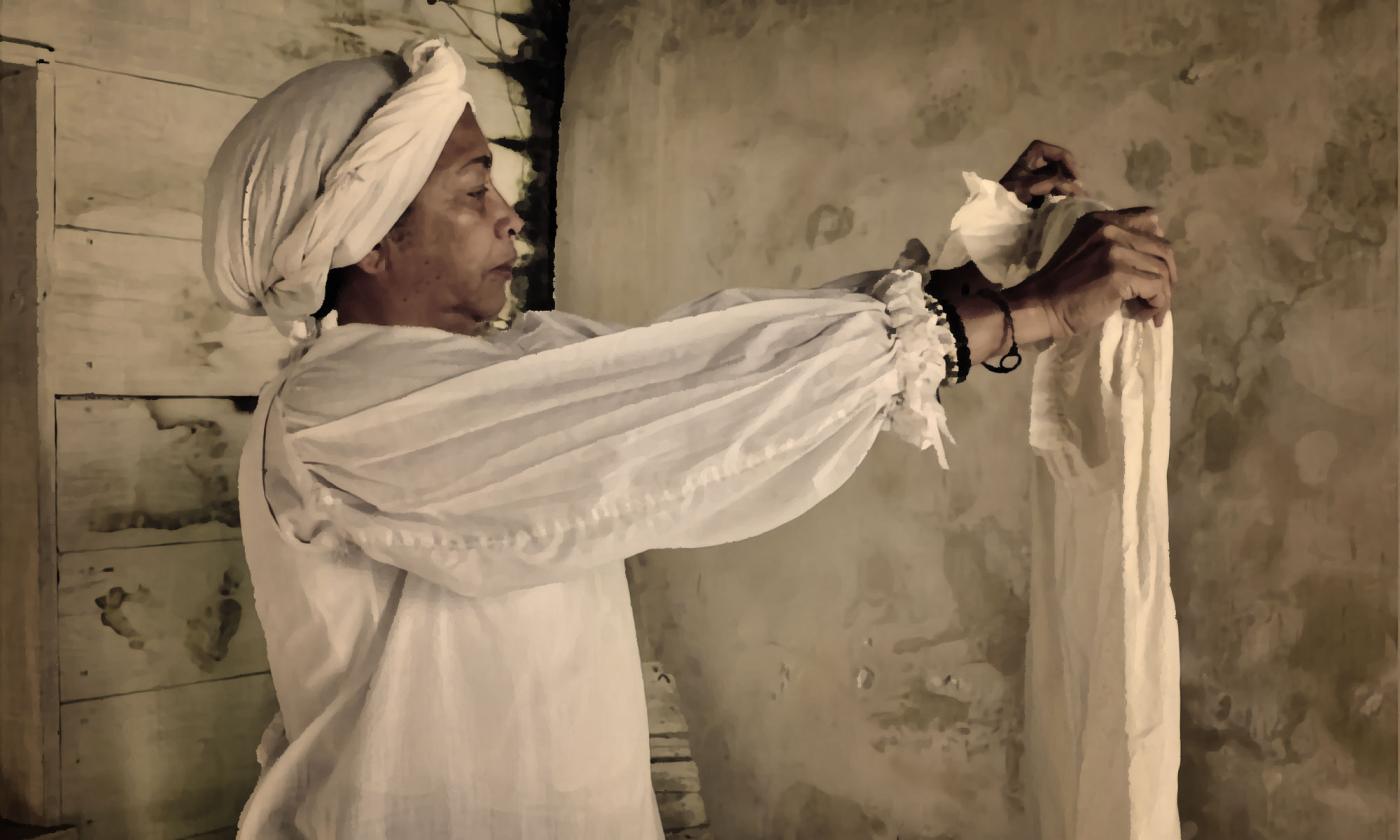
Rosa
Enslaved woman who lived during the Second Spanish Period.
Rosa
Diving Into the Archives
Everything we know about Rosa comes from the records of the Parish of St. Augustine Catholic Church and a collection of government documents called "The East Florida Papers." These sources only provide slim facts about Rosa's life.
The first evidence we see of Rosa is June 14th, 1800, for the baptism of her five-day-old daughter, Felicitas Antonia Herrera. The church's priest, Father Miguel O'Reilly, recorded a few details, including her parents' names and the names of their enslavers.
Father O'Reilly gave no surname for Rosa. All we know from this document is that she was a "parda slave of Andrés Ximenez." Parda is used here to say that she was mixed race, probably African and European. The baby's father, "Pedro Herrera, slave of Antonio Berta" was described as moreno by the priest, another term that probably means he had African and Indigenous American heritage.
Life on Hospital Street
Rosa's enslaver was a man named Andres Ximenez, who lived on Hospital Street (now Aviles Street, the oldest platted street in the United States) with his Minorcan wife, Juana Pellicer. The family lived on the second floor of a large coquina house, operating a general store and billiards hall on the ground level.
Rosa likely lived on the second floor with Andres and Juana, working day and night to raise their children and maintain the household. Under the Spanish system of slavery, she had certain rights that British or American slaves did not, including the right to earn her own money and even sue her enslaver in a court of law.
Tragedy Strikes
On April 20, 1802, a different Catholic priest recorded the burial of Rosa's daughter, who is now referred to as "Felicia Berta." She was two years old and was buried in what is now Tolomato Cemetery. It was likely from disease, as Juana Pellicer and two of her children died the same year.
In October of 1802, Andrés Ximenez wrote a will for himself, where Rosa is listed as his slave. Around 1805, Ximenez leased Rosa out to another family or business and collected five pesos a month for six months.
Rosa's Uncertain Future
In 1806 at age 55, Andrés Ximenez died. Rosa was described in his will and testament as "a mulatto woman ... about 30 years old." (Mulatto is yet another Spanish term for a mixed-race person.)
Everything that belonged to Ximenez was passed to his children, who were still minors. They became Rosa's enslavers. For the next thirteen years, their grandfather, Minorcan patriarch Francisco Pellicer, leased Rosa to an unknown customer.
The last record of the woman we only know as "Rosa" was on December 11, 1819, when she was about forty-three years old. On that day, Francisco Pellicer gave an account of the Ximenez estate to the Spanish governor and reported that he had collected 280 pesos from leasing Rosa and had spent 90 pesos to heal her during an illness.
Visiting the Ximenez-Fatio House Museum
What was Rosa's ultimate fate? How old did she live to be? The answers to these questions have not yet been found. But Rosa's story is still remembered. The Ximenez-Fatio House Museum, which Rosa once lived in with the Ximenez family, keeps a record of what little information we know about her life in St. Augustine. They are open Monday - Saturday.
The La Florida Project
Founded in 2016, LaFlorida.org is a digital archive that is hosted and maintained by the University of South Florida.
Their database contains digital scans, transcripts, and translations of St. Augustine's Catholic records from the First Spanish Period (1565-1763) and the Second Spanish Period (1784-1821). The site also has a variety of tools and resources for researchers, including videos, infographics, and more.
La Florida is a particularly valuable resource for people studying Black History in America, as few written records include Black people from that early era.
Resources
Online Resources
- Tap here to view the baptismal records of Rosa’s daughter, courtesy of LaFlorida.org.
- Tap here to view the burial records of Rosa’s daughter, courtesy of LaFlorida.org.
- Tap here to read a lesson plan for "I Lived Here As Well" from the Ximenez-Fatio House Museum.
Further Reading
- “The Story of Rosa, Andres Ximenez enslaved woman,” by Archivist Taryn Rodriguez-Boette of the Ximenez-Fatio House Museum, 2023.
- Africans and Native Americans: The Language of Race and the Evolution of Red-Black Peoples, by Jack D. Forbes.
- “The Atlantic Transformations of Francisco Menendez,” by Jane Landers, within Biography and the Black Atlantic (The Early Modern Americas), 2014.

